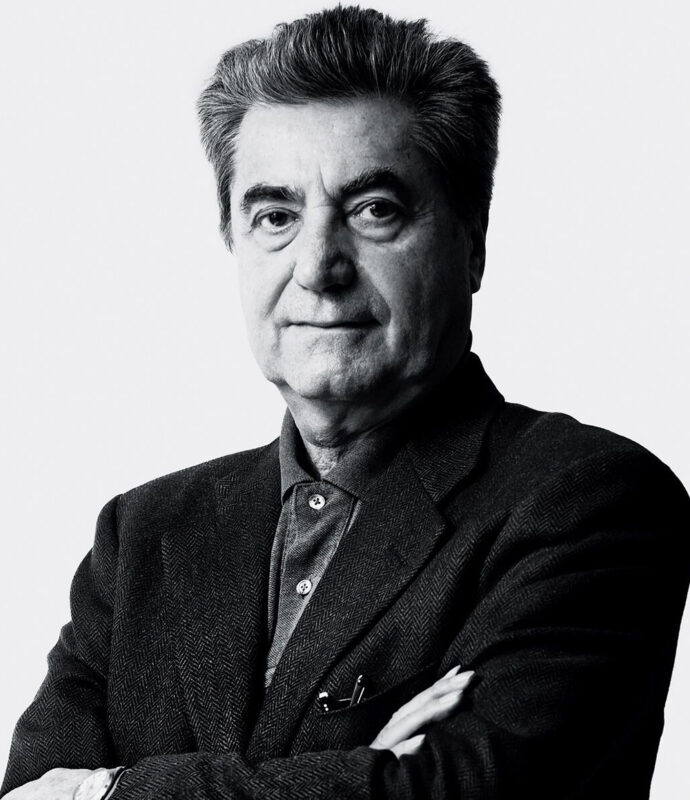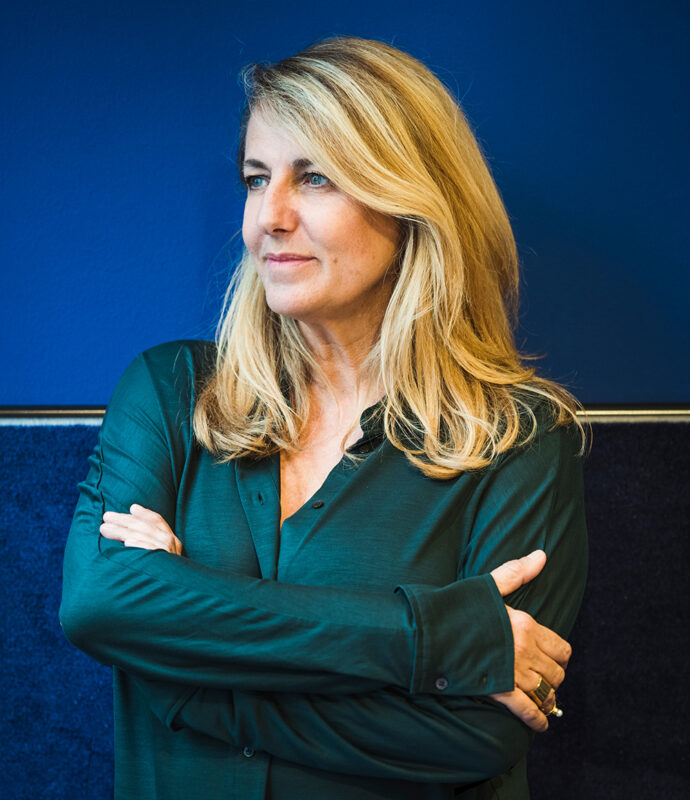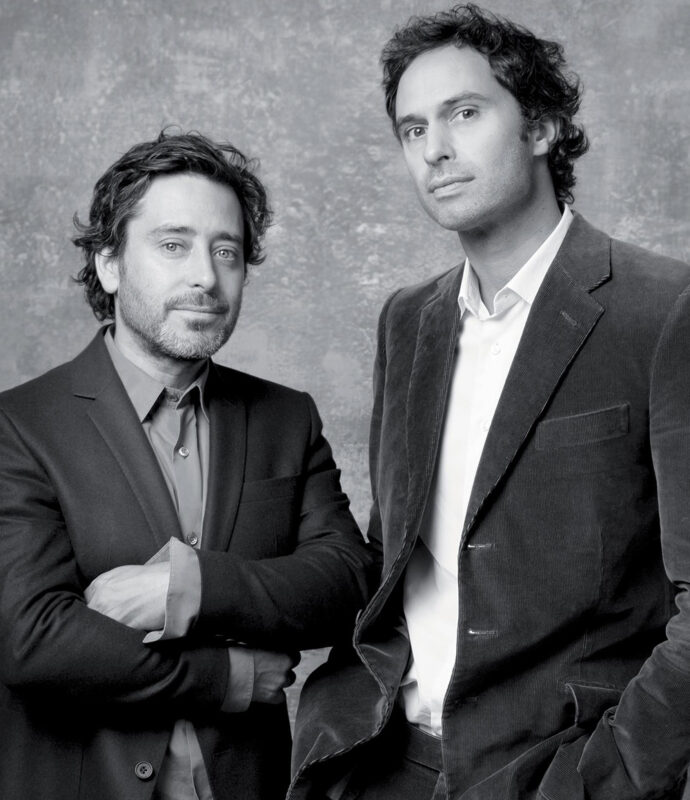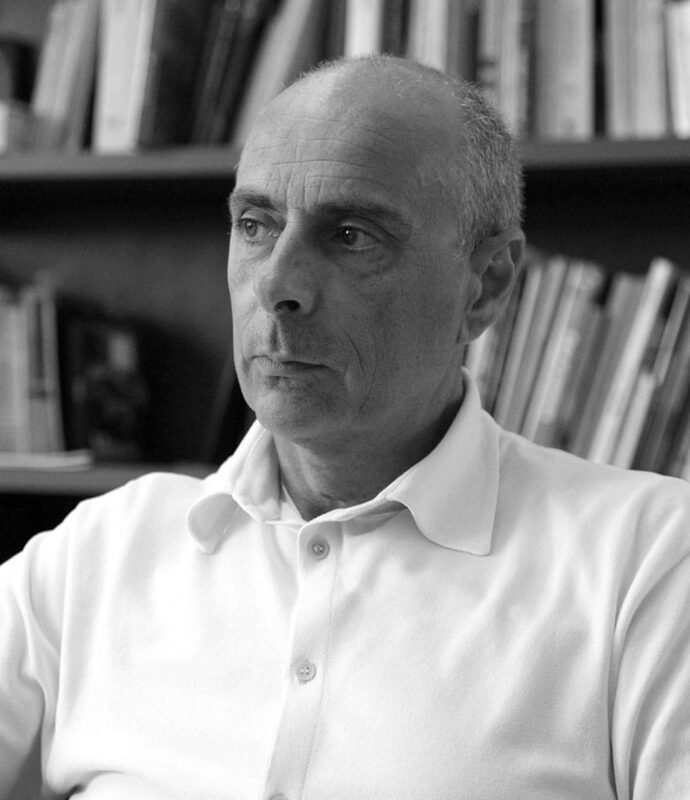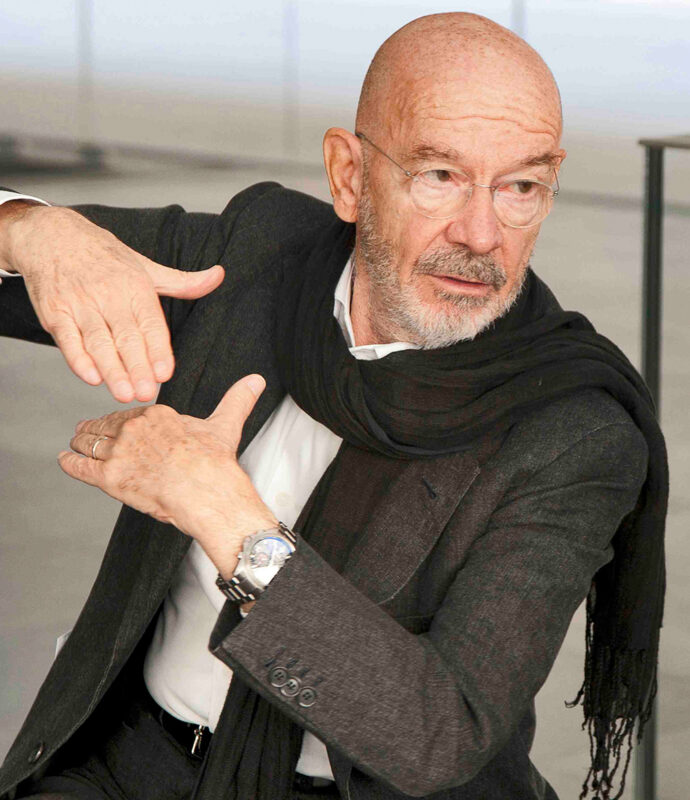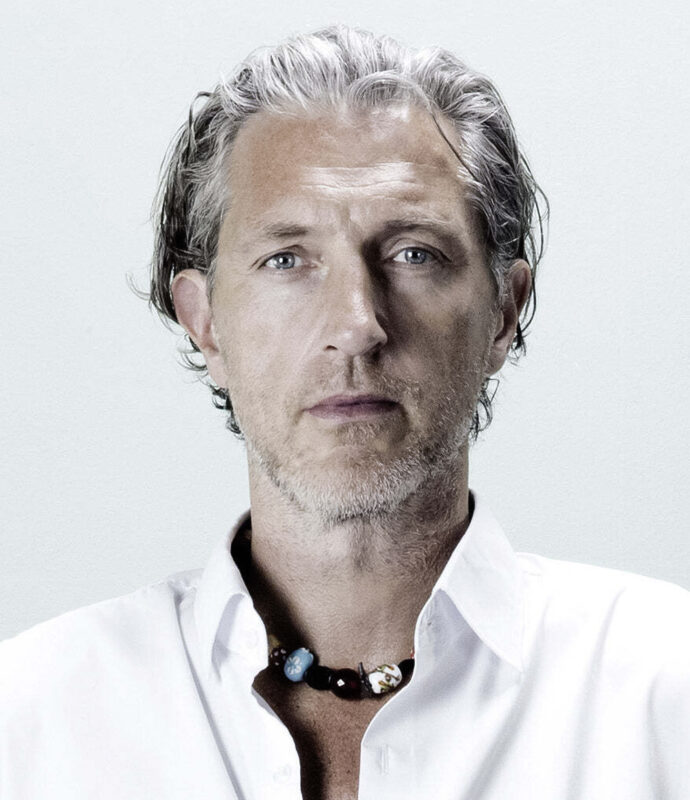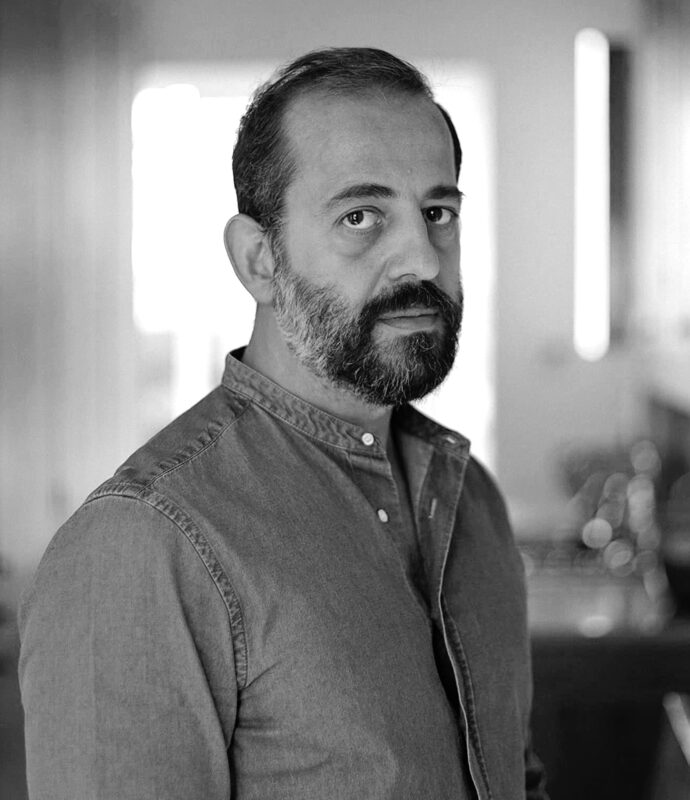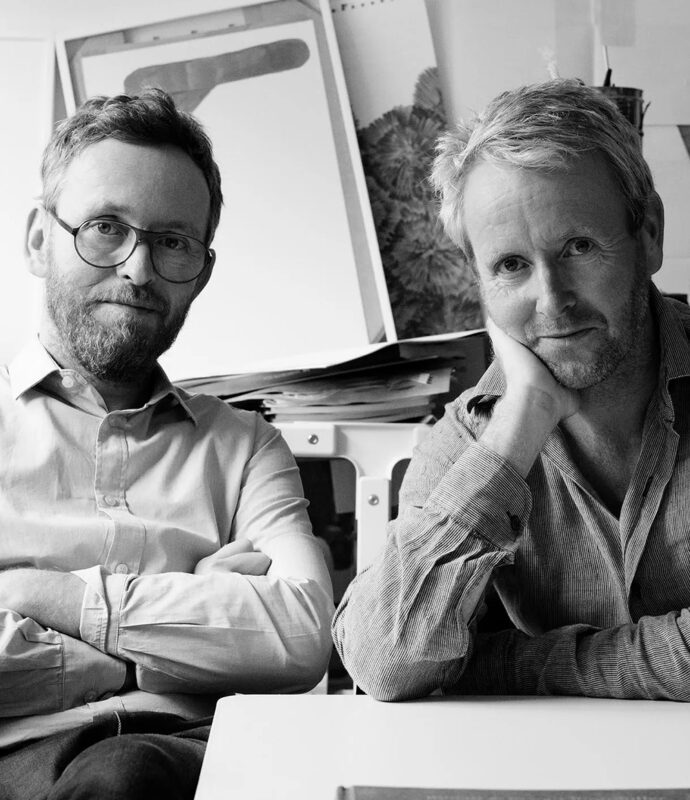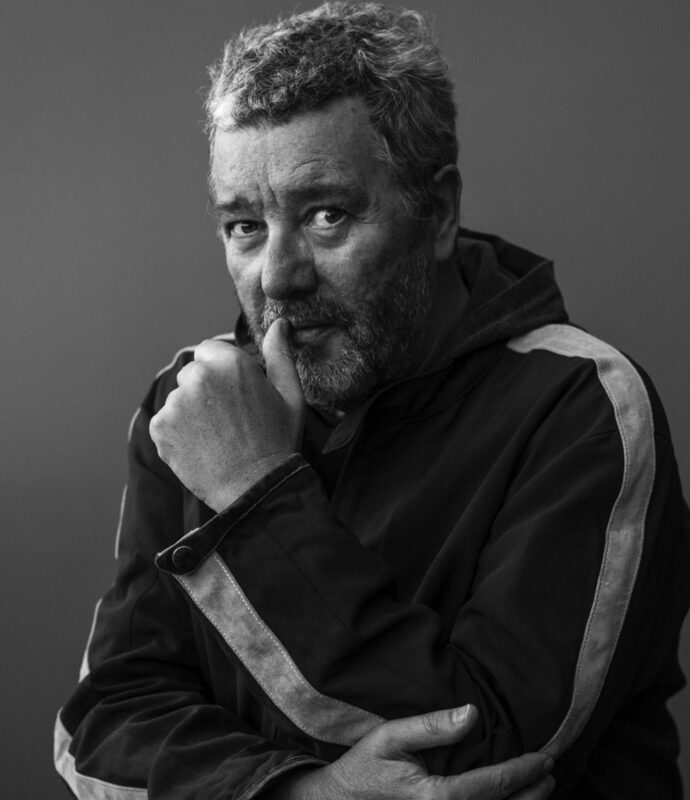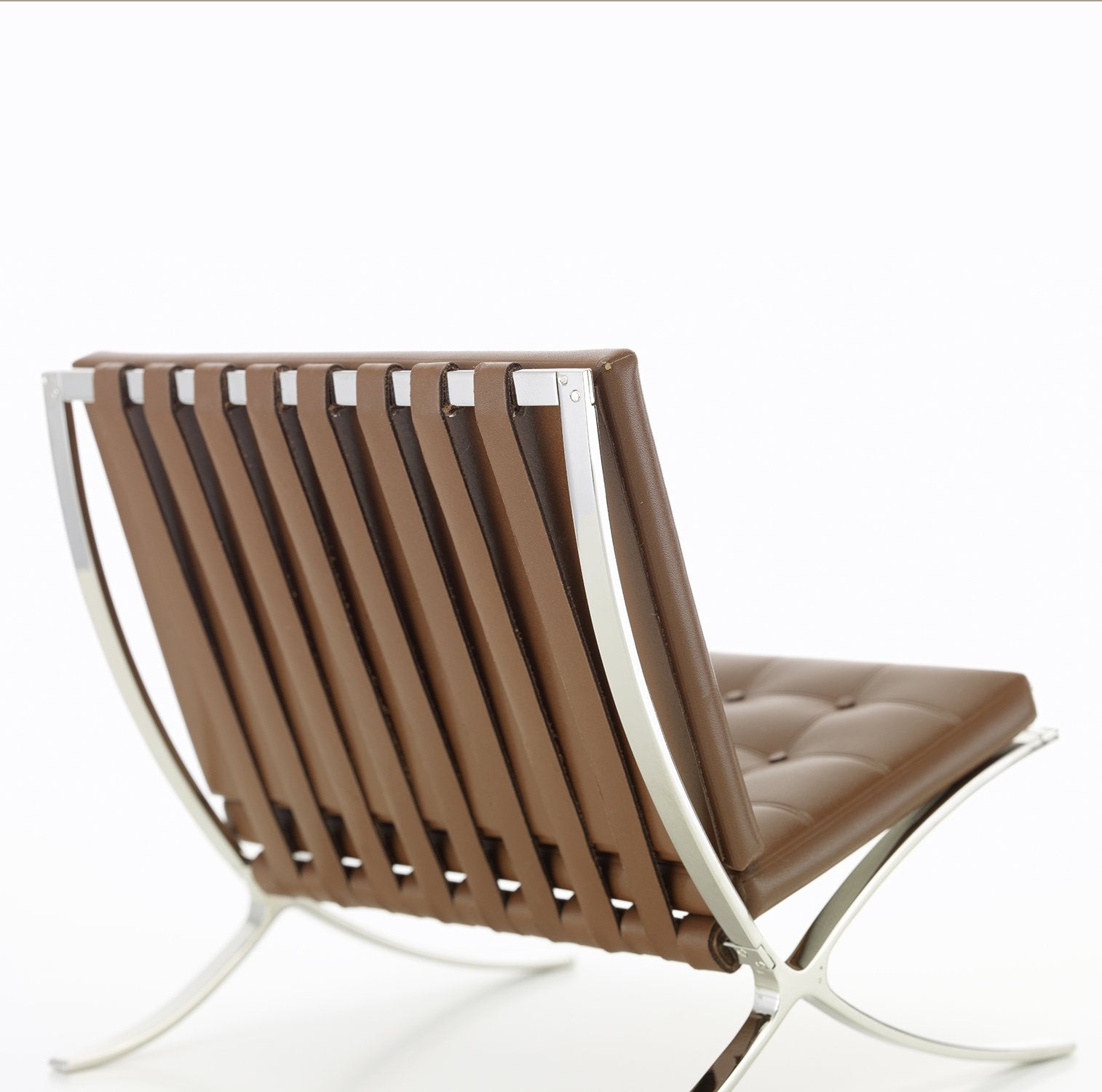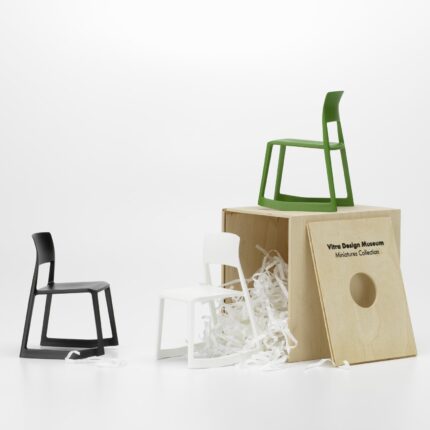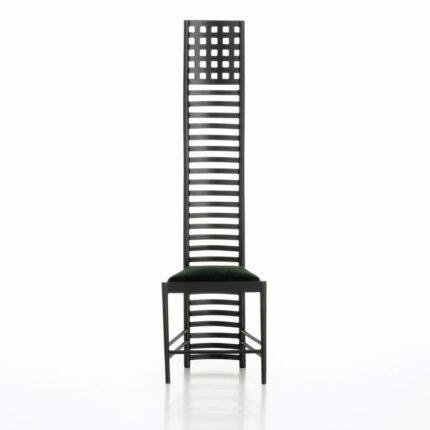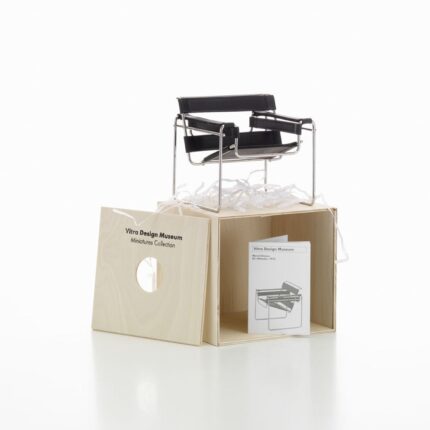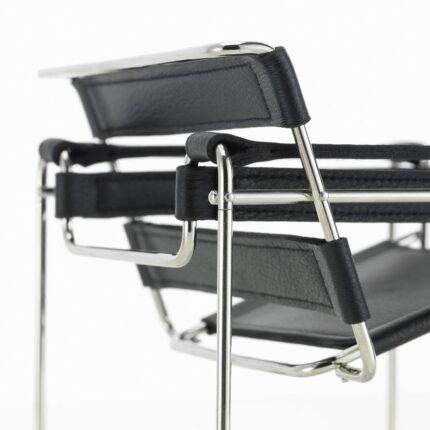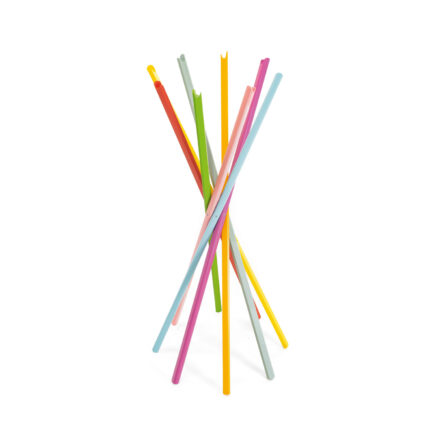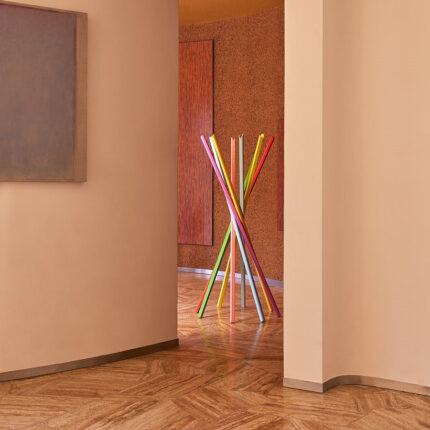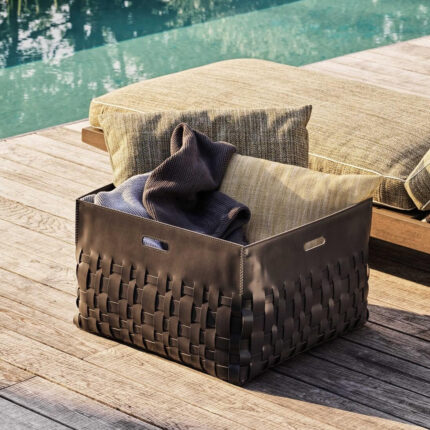Barcelona Chair Miniature
€522,00
Mies van der Rohe designed the German pavilion and related furniture for the 1929 world fair in Barcelona. Among other things, its pavilion served as a setting for the inauguration ceremony led by the Spanish royal couple Alfonso XIII and Victoria Eugenia.
Mies van der Rohe applied his avant-garde ideas of steel and glass architecture to the design of the building and drew inspiration from historical models for the furniture. Mies van der Rohe took as his starting point the ancient scissor-shaped folding chair, already a symbol of power among Egyptian rulers. Appropriate to the situation, it adopted the representative qualities of the scissor chair, although it eliminated and reinterpreted the folding function. To match the overall impression of luxury in the pavilion, Mies van der Rohe opted not to use wood like historic models, instead using chrome-plated steel strip and leather upholstery with button stitching. The pavilion was demolished after the fair. But along with the furniture, it was retrospectively recognized as a showcase for the “International Style” that prevailed all over the world. The Barcelona pavilion was rebuilt and reconstructed in 1986.
| Brand | |
|---|---|
| Designer | |
| Design year | |
| Color |
Brown |
| Material |
Fabric ,Leather |
| Origin |
Germany |
Only 2 left in stock
You can contact for detailed information.
Mies van der Rohe designed the German pavilion and related furniture for the 1929 world fair in Barcelona. Among other things, its pavilion served as a setting for the inauguration ceremony led by the Spanish royal couple Alfonso XIII and Victoria Eugenia.
Mies van der Rohe applied his avant-garde ideas of steel and glass architecture to the design of the building and drew inspiration from historical models for the furniture. Mies van der Rohe took as his starting point the ancient scissor-shaped folding chair, already a symbol of power among Egyptian rulers. Appropriate to the situation, it adopted the representative qualities of the scissor chair, although it eliminated and reinterpreted the folding function. To match the overall impression of luxury in the pavilion, Mies van der Rohe opted not to use wood like historic models, instead using chrome-plated steel strip and leather upholstery with button stitching. The pavilion was demolished after the fair. But along with the furniture, it was retrospectively recognized as a showcase for the “International Style” that prevailed all over the world. The Barcelona pavilion was rebuilt and reconstructed in 1986.
Scale : 1:6
Dimensions (cm):
Height: 12.5 cm x Width: 12.5 cm x Depth: 13 cm
Delivery
- Your orders in the online stock will be delivered within 5 business days at the latest in Istanbul.
- The delivery time of customizable products varies according to product specifications.
Cargo
- Your product is packaged and delivered to you by the Mozaik delivery team in accordance with the procedures.
- Shipping costs depend on the size of your order and the requested destination.
100% Original
Mozaik is an authorized dealer of world famous design brands. All products sent from Mozaik are original and under warranty.
The brands have been selected for the high quality and standardized control of their production.
Guarantee
The quality of our products is at the top of their category and the way we stock and ship them is done in a way that guarantees the safety of the products.
Manufacturers provide a guarantee depending on the type of product. The service is provided directly by the manufacturer brands.



